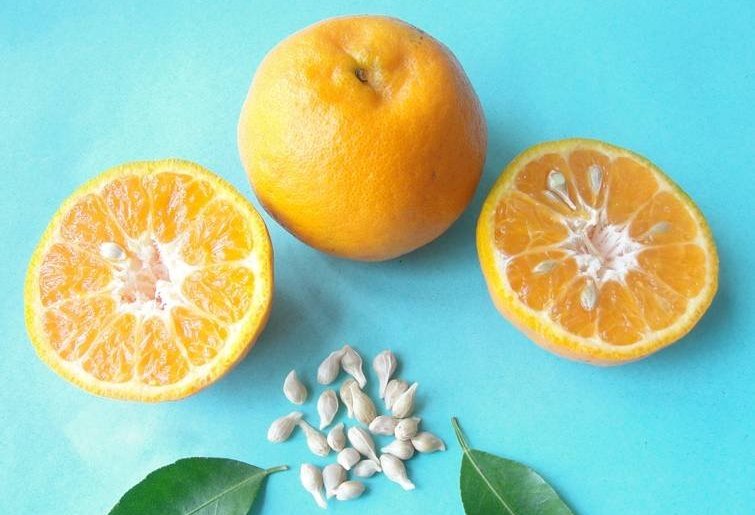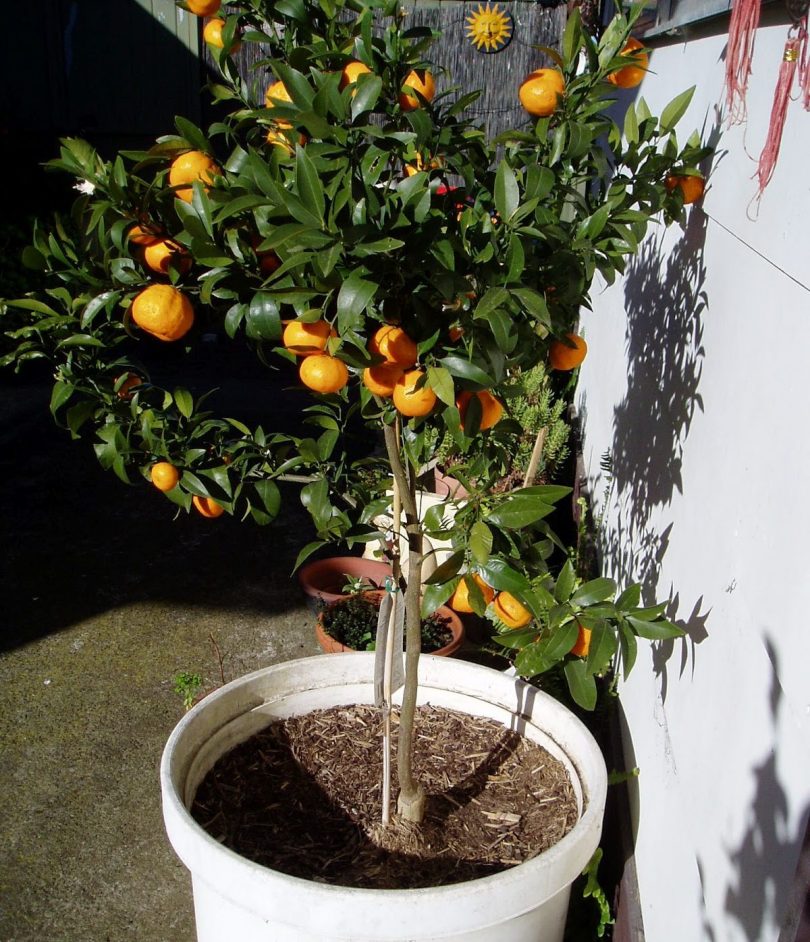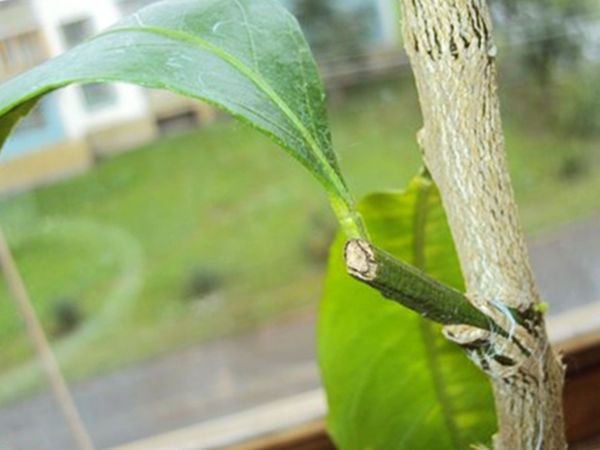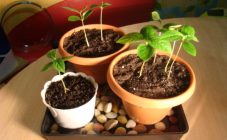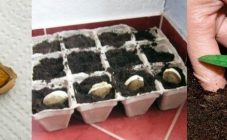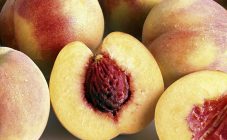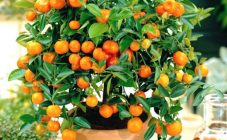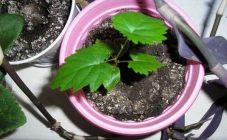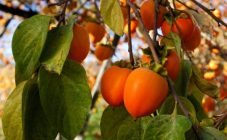Content:
Despite the harsh conditions, it is quite possible to grow a tangerine from a seed at home. It should be noted that the process is quite long and laborious. In addition, the tangerine planted from seeds differs in taste from its predecessor. To get tasty fruits, you need to plant a seedling.
Suitable varieties
The bone tangerine tree is a wonderful decoration for your home. Flowers, fruits and leaves release phytoncides that improve air quality. The bright fruit color and delicate aroma improve mood and relieve stress.
Many plant lovers try the seed method, since it is really possible to grow a tangerine for decorative purposes from any fruit bought in a store. However, before choosing tangerine seeds for planting, you need to take several fruits and pull out only the largest and densest seeds from them.
If you want to get fruits, then for breeding you need to choose undersized species of the following varieties:
- Unshiu is a very unpretentious early maturing shrub. Bears abundantly without interruption with proper care organization;
- Murcott is a rather rare species for Russia. The fruits ripen in summer. Prized for its honey taste;
- Shiva Mikan - feels good when grown at home. Mandarins are growing very actively. The fruits are quite large - up to 30 g;
- Clementine is a variety known to everyone and the most common. The peculiarity of the variety is that it needs mandatory vaccination, otherwise it will grow wild.
Growing a tangerine from a bone
First of all, before planting a tangerine, it is worth remembering that fruiting is impossible without vaccination. But do not give up the idea of getting a tangerine tree from a seed, since in almost any specialized garden center you can find a cultural graft of any citrus: tangerine, lemon, orange and even rarer varieties.
3-4 years after grafting, the mandarin will give its first harvest. However, a non-grafted bush also produces fruits, but they are not edible, since they are tasteless and small. Cultivation of a cultivated mandarin takes place without much hassle if the grafting was done on a well-rooted cuttings. The cost of a self-grown bush is much lower than that of an adult purchased at a flower shop.
An interesting experience can be obtained with rooting a branch, which is sometimes found on fruits in stores. The process is similar to grafting. The main thing is that the branch should give roots.
Terms
Cultivation cannot be called difficult, but certain conditions must be observed, since mandarin grows in nature in a warm climate. Therefore, it is important to ensure:
- Stable temperature above + 15˚C;
- Situated on a south-facing window;
- Maintaining air humidity. You can use a humidifier or periodically irrigate the bush with a spray bottle;
- Debugged water regime. Watering cannot be skipped. Moreover, in the spring-summer period, the regularity of watering is more intense than in the autumn-winter;
- With the onset of spring, the plant is fertilized with universal means.
It is very important to pinch the branches and white blossoms. Removing excess branches allows you to form a crown, and getting rid of some of the flowers reduces the load, since the young branch can break from the large weight of the fruit.
Seed selection
The seed for propagation must be chosen from the brightest ripe fruit.The best time for selection is winter. This is the period of natural fruit ripening. In other periods, the probability of obtaining defective seeds increases several times. You can check the quality of the material by immersion in water. Good bones will go to the bottom, and those that have surfaced will either not emerge at all, or will grow frail. The germination rate of planting material does not exceed 30%, therefore, to get 1-2 sprouts, you need to prepare at least 5 seeds. You do not need to dry the seeds, you can try to germinate them immediately after removing them from the pulp.
Landing
Following the step-by-step instructions will greatly simplify the process of growth and development of a young tree:
- Immediately before growing tangerines, you need to pre-sow the seeds. In order to disinfect the bones, they are placed in hydrogen peroxide diluted with water (1:10) for a couple of seconds. Then you can wrap the seeds in a damp natural cloth. Do not allow it to dry out, but you do not need to fill in the fabric. After a few days, the seeds will begin to sprout.
- By the time the seed germinates, you need to prepare the soil. The soil should be light, preferably a mixture of humus and sand in a 2: 1 ratio with normal acidity.
- Soil is poured into a pot with a diameter of 10 cm and all the seeds are planted to a depth of 2 cm. The sprouted material will sprout in different ways. On average, seeds begin to grow after 2 weeks, but the process is often delayed for a month. For transplanting, you will need to choose the most powerful mandarin sprout. Weaker shoots can either be thrown away, or you can try to strengthen and plant them.
- How to transplant mandarin seedlings? This is done in 2 steps. The first procedure can be done when 3-4 true leaves appear. All citrus fruits are multi-embryonic. What does a mandarin sprout look like with such a pathology - two sprouts hatch simultaneously from one seed. In this case, each has its own root system. They can be separated, most likely both will survive. If in doubt, the weaker one can be trimmed. The second transplant is done when the roots have completely occupied the provided volume.
- Since it can be difficult to grow a tangerine from a bone in low light, it is necessary to provide additional lighting with phytolamps. This is relevant, given that the planting of the seed occurs in the winter (peak yield).
Follow-up care
Taking care of the trees is quite simple. The most important condition is maintaining the humidity of the air and soil. The plant responds well to spraying.
The second important point is lighting. In general, it is necessary to maintain a sufficiently bright room with shading in the summer and supplementary lighting in the winter. In summer, the bush can be taken out on the balcony or in the garden.
It is important for tangerines to bloom to have rest periods. In winter, it is necessary to create a temperature regime within + 10˚C with a significant reduction in watering. During this period, you need to let the top layer of the soil dry out. With the onset of spring, buds begin to form. During this period, the temperature should be around + 17˚C. With the onset of summer, the temperature should be kept at + 25˚C. Higher temperatures are detrimental to the flowering shrub as it sheds flowers. Spraying helps to cope with the heat, but it should be very gentle so that no water droplets fall on the petals.
In order for the crown to form evenly, you can rotate the tangerine around its axis, as the branches stretch towards the light. The turn is done gradually by a couple of cm, then you need to wait 15 days and turn a little more. When turning quickly, the plant can be stressful, as it does not like quick changes.
An interesting moment comes when the fruits appear. Ripening takes six months. Therefore, this period is often not winter.The question arises of what to do in this situation: to give the plant rest or to supplement it. The fact is that even at low temperatures the fruits continue to ripen, but this process is slower. Therefore, it is imperative to supplement ripening tangerines, regardless of the season.
Top dressing is needed only for adult tangerines. It is not necessary to feed the bush until 5-6 years of age. An adult plant needs fertilization throughout the growing season from spring to autumn. As a top dressing, you can choose a ready-made complex for citrus fruits or dilute manure or droppings with water (1:10 and 1:20, respectively). The frequency of dressing is 2 times a month.
A warm shower also helps. If pests do appear (most often these are spider mites, aphids and scabbards), then insecticidal treatment must be carried out. Fitoverm, Inta-Vir and Aktelik give a good result. The frequency of processing is 1 time per 1-1.5 weeks. You also need to rinse the leaves with soapy water.
Mandarin grafting
Many gardeners are concerned about how to plant a tangerine so that it begins to bear fruit. First you need to take a cut of the cultivated tree. Such a stalk can be purchased in the store or taken from the hands of a tree grower. The twig is separated from the bush only with a sharply sharpened disinfected knife. A seedling with a trunk thickness of at least 7 mm in diameter is suitable for grafting. The tree can be grafted with a shallow cut under the bark, with two cuts at an acute angle, or by attaching the cutting to a V-shaped cut on the trunk. The graft must be attached to the stock very tightly and neatly. The junction is wrapped with a cloth, tape or electrical tape. The wound can be treated with garden varnish. The stalk can be covered with foil. To speed up grafting, the plant can be treated with growth stimulants. If the vaccination is successful, then further development will depend only on the quality of care.
Growing tangerines at home has become very popular. The tree itself has a decorative look. However, gardeners are attracted by the opportunity to get their own harvest. If you follow the recommendations, this is quite possible. The southern mandarin plant grows well in more severe latitudes, subject to proper care.


